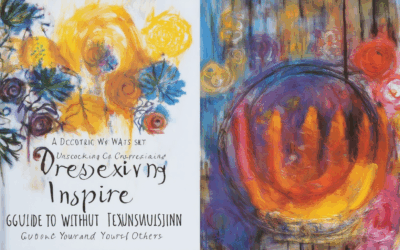Artful storytelling is a powerful medium that weaves together emotion, creativity, and technique to captivate audiences and convey meaningful messages. Whether through visual art, literature, or performance, the essence of artful storytelling lies in its ability to resonate deeply with individuals, fostering connections and inspiring reflection. This article delves into the intricate techniques, evolving trends, and profound impacts of artful storytelling, exploring how it shapes narratives, engages communities, and influences cultural expression. From examining the foundational principles of storytelling to examining its modern applications across various disciplines, this comprehensive exploration will shed light on the transformative power of artful storytelling and its enduring relevance in today’s world.
Key Takeaways
- Storytelling in Art Transforms Static Visuals into Dynamic Narratives
- Artists Use Storytelling to Convey Complex Themes and Emotions
- Engagement and Inspiration Through Art Stories
- Impact on Creativity and Innovation
- Practical Techniques for Applying Storytelling in Art

The 5 Cs of Storytelling
The 5 Cs of storytelling are essential elements that contribute to creating an engaging, impactful, and memorable narrative. These Cs stand for five key components that every great story must master:
- Character : A well-defined protagonist and supporting characters drive the story forward. They must be relatable, have depth, and undergo development throughout the narrative.
- Conflict : Every compelling story has a central struggle or obstacle that the protagonist faces. This conflict creates tension and propels the story forward, ultimately leading to growth or transformation.
- Climax : The peak moment or turning point in the story where the conflict reaches its highest state of tension. This is often the most pivotal part of the narrative, leaving a lasting impression on the audience.
- Contribution : Stories that leave a meaningful impact often contribute to the audience’s understanding or personal growth. They resonate emotionally and intellectually, offering insights or lessons.
- Connection : The emotional or personal bond between the story and its audience is crucial. A story that connects on a deep level stays with the listener long after the tale is told.
By mastering these five elements, storytellers can craft tales that captivate audiences, evoke emotions, and inspire reflection.
What are the 5 P’s of storytelling?
Storytelling’s 5Ps – Innovatank Publishing
By thoughtfully addressing these five Ps—People, Place, Pictures, Personal, and Platform—you can construct a compelling and effective story that resonates with your audience.
- People: Engage your audience by understanding their emotions, backgrounds, and interests. Create relatable characters and scenarios that mirror their experiences.
- Place: Set the scene with vivid descriptions that immerse the reader in the story’s location. Whether real or imagined, the environment should feel authentic and meaningful.
- Pictures: Visualize the narrative through imagery and metaphors. Use descriptive language to paint a mental picture that enhances the storytelling experience.
- Personal: Infuse the story with your unique perspective and personality. Authenticity draws readers in and helps establish trust with your audience.
- Platform: Choose the right medium to share your story. Whether it’s through writing, speaking, or visual media, ensure your platform aligns with your audience’s preferences.
At Patrick Mettraux, we believe in the power of storytelling to inspire and transform. Our blog explores personal narratives, artistic perspectives, and creativity tips to foster a community of inspired individuals. Explore our stories today and discover the magic of storytelling.
Learn more about Patrick Mettraux

The Four Pillars of Storytelling
The 4 Ps of storytelling are essential components that every great narrative must master. These pillars ensure that stories are engaging, relatable, and impactful. Let’s break down each element:
People
Characters are the heart of any story. People include the protagonist, antagonist, supporting characters, and minor figures who populate the narrative. Their development, motivations, and relationships drive the plot forward. Creating believable characters helps readers connect emotionally with the story.
Places
Setting plays a crucial role in shaping the tone and atmosphere of a story. Places can range from fictional worlds to real-life locations. Whether it’s a bustling city, a serene forest, or a mysterious castle, the environment influences the story’s pacing, mood, and character actions.
Purpose
Purpose refers to the underlying theme or message of the story. It gives the narrative direction and meaning. A strong purpose can inspire empathy, provoke thought, or entertain audiences. Without a clear purpose, a story may feel disjointed or lacking focus.
Plot
The plot is the sequence of events that make up the story. It includes the beginning, which introduces the conflict, the middle, which develops the tension, and the end, which resolves the storyline. A well-crafted plot keeps readers engaged and ensures the story flows logically from one scene to the next.
By mastering these four elements, storytellers can craft compelling tales that resonate with audiences on multiple levels.

What is the Power of Storytelling in Art?
Storytelling is the essence of art, allowing creators to communicate complex emotions, ideas, and messages through visual mediums. Every piece of art, whether it’s a painting, sculpture, or digital creation, serves as a vessel for stories that resonate with viewers on a deeply personal level.
The Emotional Connection
- Communication of Messages: Artists use storytelling to convey themes, moral lessons, or cultural values, often leaving interpretation to the viewer.
- Expression of Emotions: Through symbols, colors, and compositions, artists can evoke feelings that words alone cannot capture.
- Conveying Ideas: Stories in art often explore philosophical questions, social issues, or personal journeys, offering insight into human experiences.
Engagement and Inspiration
- Connecting Viewers: Effective storytelling in art creates a bridge between the artist’s vision and the audience’s imagination.
- Inspiring Change: Art has the power to challenge norms, spark conversations, and drive social movements through its narrative.
- Cultural Preservation: Stories embedded in art traditions help maintain cultural identity and historical memory across generations.
Impact on Creativity
- Fostering Imagination: Storytelling encourages artists to explore diverse perspectives and innovative techniques.
- Encouraging Exploration: By diving into narratives, artists can uncover hidden meanings and create works that invite deeper reflection.
- Facilitating Learning: Stories in art make complex concepts accessible, helping viewers understand abstract ideas through relatable tales.
Examples in Practice
- Famous Artists: Masters like Hieronymus Bosch and Norman Rockwell used storytelling to create iconic works that continue to captivate audiences.
- Modern Applications: Contemporary artists blend personal anecdotes with universal themes, creating art that feels both intimate and universally relatable.
How to Apply Storytelling in Art
- Use Symbolism: Icons and metaphors become powerful tools for conveying stories without direct representation.
- Narrative Composition: Arrange elements in a sequence that guides the viewer through a journey.
- Embrace Ambiguity: Leave room for interpretation, allowing stories to evolve differently for each observer.
Ultimately, storytelling in art transforms static visuals into dynamic narratives, making art a living, breathing form of communication that continues to shape our world.
The Four Elements of Great Storytelling
Telling a great story involves several key elements that work together to captivate an audience. Here’s a breakdown of the essential components:
- Relatability : A great story resonates with the audience on a personal level. It should feel authentic and mirror experiences that the listener or reader can connect with.
- Novelty : A compelling story offers something new or unexpected. It surprises the audience while still feeling familiar enough to engage with emotionally.
- Fluency : The narrative should flow smoothly, guiding the audience effortlessly through the story’s progression without confusion or abrupt transitions.
- Tension : A well-told story creates suspense, drawing the audience in and keeping them invested in the outcome.
By balancing these elements, storytellers can craft tales that are not only entertaining but also deeply impactful, leaving a lasting impression on the audience.

What Makes Storytelling So Powerful?
Storytelling is a fundamental human tool that transcends cultural boundaries and speaks directly to the heart of human nature. Its power lies in its ability to connect people emotionally, inspire action, and convey complex ideas in a relatable way. Here’s why storytelling is such an effective medium:
The Emotional Connection
Storytelling creates an emotional bridge between the storyteller and the audience. By sharing personal experiences, challenges, and triumphs, stories evoke empathy and resonance. When listeners identify with the characters or situations described, they develop a deeper understanding of the narrator’s perspective.
Inspiration and Motivation
Stories have the unique ability to inspire and motivate. Whether it’s a tale of overcoming adversity or a journey toward self-discovery, narratives often leave listeners feeling empowered to pursue their own goals. This emotional impact can lead to increased confidence and a renewed sense of purpose.
Educational Value
Beyond entertainment, storytelling serves as a powerful educational tool. It simplifies complex concepts, making abstract ideas more accessible. Through relatable scenarios and character development, listeners can better understand difficult topics, whether they’re learning about history, science, or leadership.
Memory Retention
Research shows that stories are more memorable than mere facts or statistics. This is because the brain processes narrative information differently, creating a stronger mental footprint. Stories stick with us long after data or information has been forgotten.
Cultural Preservation
Storytelling plays a crucial role in preserving culture and heritage. Oral traditions, myths, and legends passed down through generations serve as a living archive of human knowledge. These stories carry historical significance, values, and wisdom that might otherwise be lost.
Conflict Resolution
Stories often explore conflict and resolution, offering lessons in problem-solving and relationship building. By examining the struggles and triumphs of characters, listeners can gain insights into handling disputes and fostering collaboration in their own lives.
How to Leverage Storytelling Effectively
To harness the power of storytelling, consider the following tips:
- Keep it simple: Focus on clear, relatable themes and characters.
- Use sensory details: Paint vivid pictures that engage the imagination.
- Be authentic: Share stories with genuine emotion and intent.
- Encourage interaction: Invite questions and feedback to deepen the connection.
By understanding and applying these principles, you can unlock the full potential of storytelling to captivate, educate, and transform. Remember, the power of a great story lies in its ability to resonate deeply with the listener, leaving a lasting impact on their mind and soul.
Explore more insights on storytelling and creative expression





0 Comments